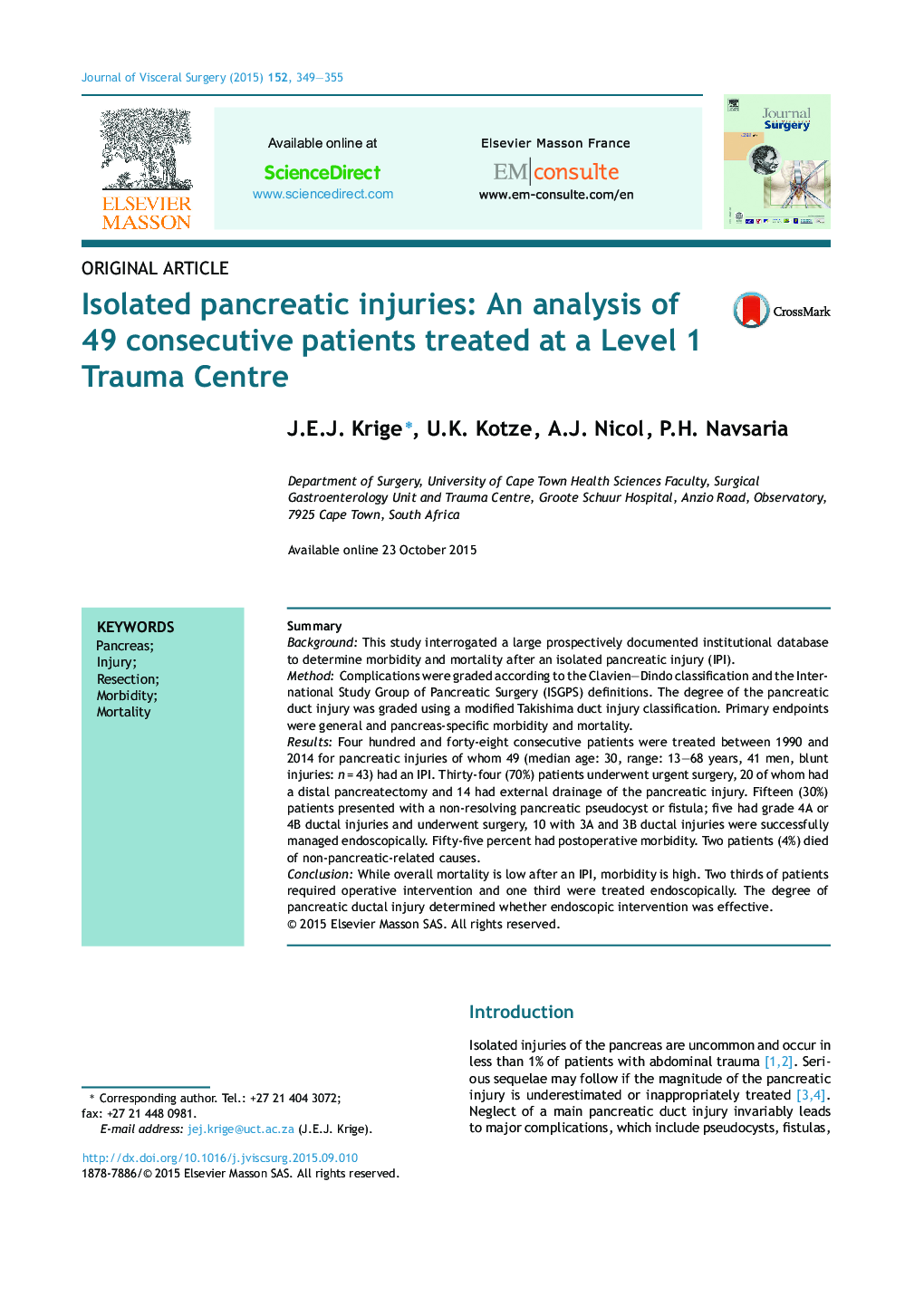| Article ID | Journal | Published Year | Pages | File Type |
|---|---|---|---|---|
| 6110391 | Journal of Visceral Surgery | 2015 | 7 Pages |
SummaryBackgroundThis study interrogated a large prospectively documented institutional database to determine morbidity and mortality after an isolated pancreatic injury (IPI).MethodComplications were graded according to the Clavien-Dindo classification and the International Study Group of Pancreatic Surgery (ISGPS) definitions. The degree of the pancreatic duct injury was graded using a modified Takishima duct injury classification. Primary endpoints were general and pancreas-specific morbidity and mortality.ResultsFour hundred and forty-eight consecutive patients were treated between 1990 and 2014 for pancreatic injuries of whom 49 (median age: 30, range: 13-68 years, 41 men, blunt injuries: n = 43) had an IPI. Thirty-four (70%) patients underwent urgent surgery, 20 of whom had a distal pancreatectomy and 14 had external drainage of the pancreatic injury. Fifteen (30%) patients presented with a non-resolving pancreatic pseudocyst or fistula; five had grade 4A or 4B ductal injuries and underwent surgery, 10 with 3A and 3B ductal injuries were successfully managed endoscopically. Fifty-five percent had postoperative morbidity. Two patients (4%) died of non-pancreatic-related causes.ConclusionWhile overall mortality is low after an IPI, morbidity is high. Two thirds of patients required operative intervention and one third were treated endoscopically. The degree of pancreatic ductal injury determined whether endoscopic intervention was effective.
